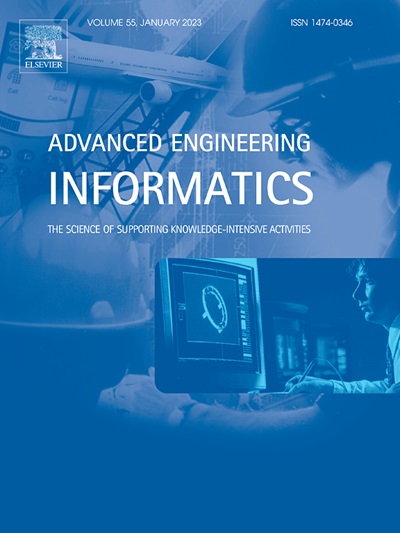Tailored vision-language framework for automated hazard identification and report generation in construction sites
IF 8
1区 工程技术
Q1 COMPUTER SCIENCE, ARTIFICIAL INTELLIGENCE
引用次数: 0
Abstract
Timely, comprehensive, and accurate identification of construction hazards is essential for mitigating the accident risk. Automated hazard identification via computer vision has advanced beyond traditional inspection methods but struggles with the dynamic complexity of construction environments, leading to limitations in identifying various hazard categories and generating detailed hazard reports. To address these issues, this study proposes an innovative framework comprising an advanced Vision-Language Model (VLM)-empowered construction hazard identifier, ChatCH, and an end-to-end method for generating construction hazard reports. A dedicated Construction Hazard Dataset (CHD) containing 1,308 real construction hazard images across 32 fine-grained categories was developed for validation purposes. Experimental results show that ChatCH, fine-tuned with the pre-trained VLM Qwen2-VL-7B, achieves a precision of 89.4%, outperforming the pre-trained Qwen2-VL-7B by 43.5% and the traditional pre-trained VLM CLIP by 83.9%. Additionally, ChatCH demonstrates strong few-shot learning capabilities and robustness. Moreover, the end-to-end method for construction hazard report generation can automatically produce structured and detailed hazard reports. This framework provides an innovative solution for construction safety management, enhancing efficiency, accuracy, and automation in construction hazard identification.
为建筑工地的自动危险识别和报告生成量身定制的视觉语言框架
及时、全面、准确地识别施工危险源对降低事故风险至关重要。基于计算机视觉的自动危险识别已经超越了传统的检测方法,但由于建筑环境的动态复杂性,导致在识别各种危险类别和生成详细的危险报告方面存在局限性。为了解决这些问题,本研究提出了一个创新的框架,包括一个先进的视觉语言模型(VLM)授权的建筑危险标识符,ChatCH和一个端到端生成建筑危险报告的方法。为了验证目的,开发了一个专用的建筑危害数据集(CHD),其中包含32个细粒度类别的1,308个真实建筑危害图像。实验结果表明,ChatCH与预训练的VLM Qwen2-VL-7B进行微调后,准确率达到89.4%,比预训练的Qwen2-VL-7B高43.5%,比传统的预训练VLM CLIP高83.9%。此外,ChatCH还展示了强大的少量学习能力和鲁棒性。此外,端到端的施工危害报告生成方法可以自动生成结构化、详细的危害报告。该框架为建筑安全管理提供了一个创新的解决方案,提高了建筑危险识别的效率、准确性和自动化程度。
本文章由计算机程序翻译,如有差异,请以英文原文为准。
求助全文
约1分钟内获得全文
求助全文
来源期刊

Advanced Engineering Informatics
工程技术-工程:综合
CiteScore
12.40
自引率
18.20%
发文量
292
审稿时长
45 days
期刊介绍:
Advanced Engineering Informatics is an international Journal that solicits research papers with an emphasis on 'knowledge' and 'engineering applications'. The Journal seeks original papers that report progress in applying methods of engineering informatics. These papers should have engineering relevance and help provide a scientific base for more reliable, spontaneous, and creative engineering decision-making. Additionally, papers should demonstrate the science of supporting knowledge-intensive engineering tasks and validate the generality, power, and scalability of new methods through rigorous evaluation, preferably both qualitatively and quantitatively. Abstracting and indexing for Advanced Engineering Informatics include Science Citation Index Expanded, Scopus and INSPEC.
 求助内容:
求助内容: 应助结果提醒方式:
应助结果提醒方式:


